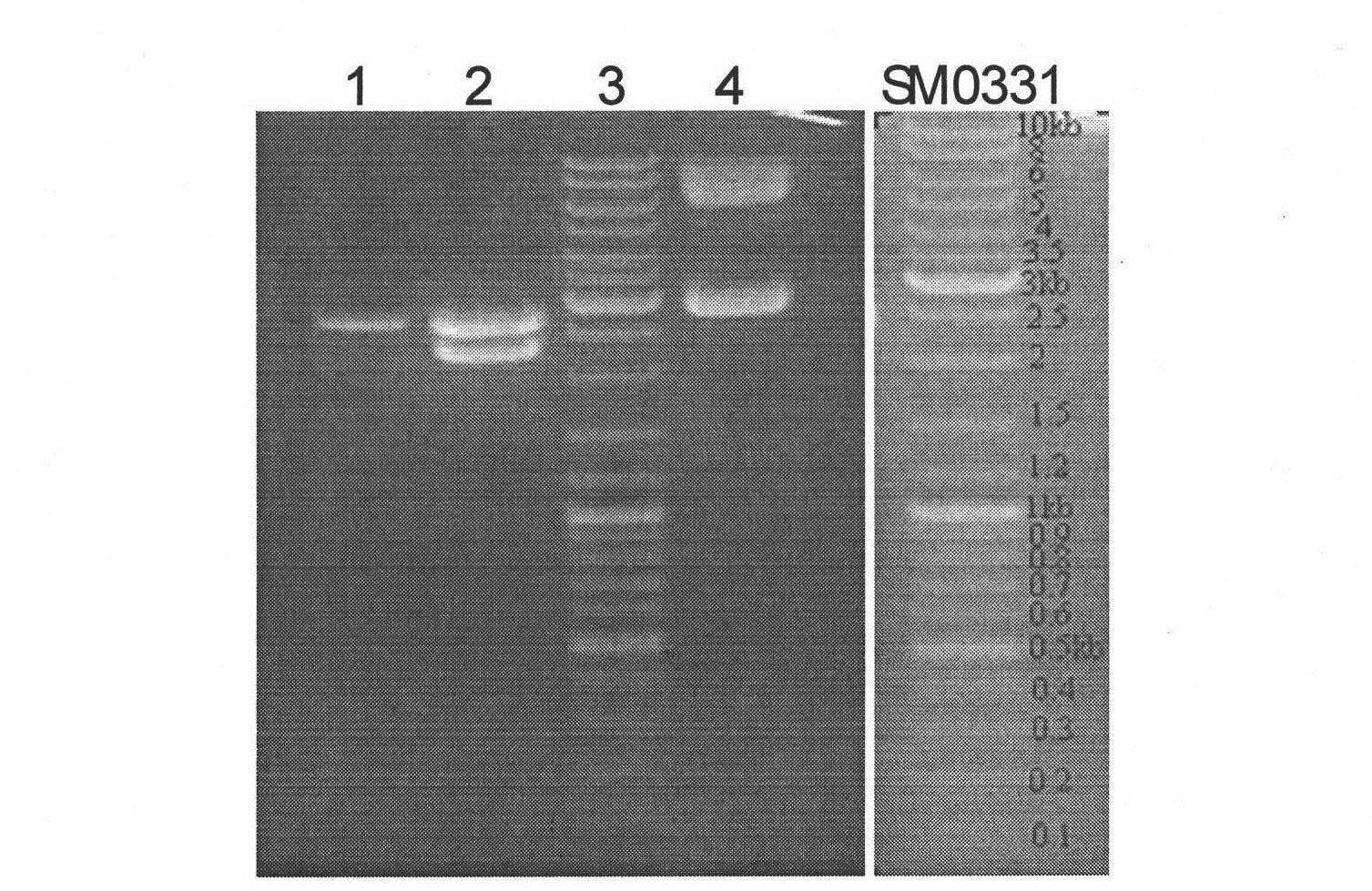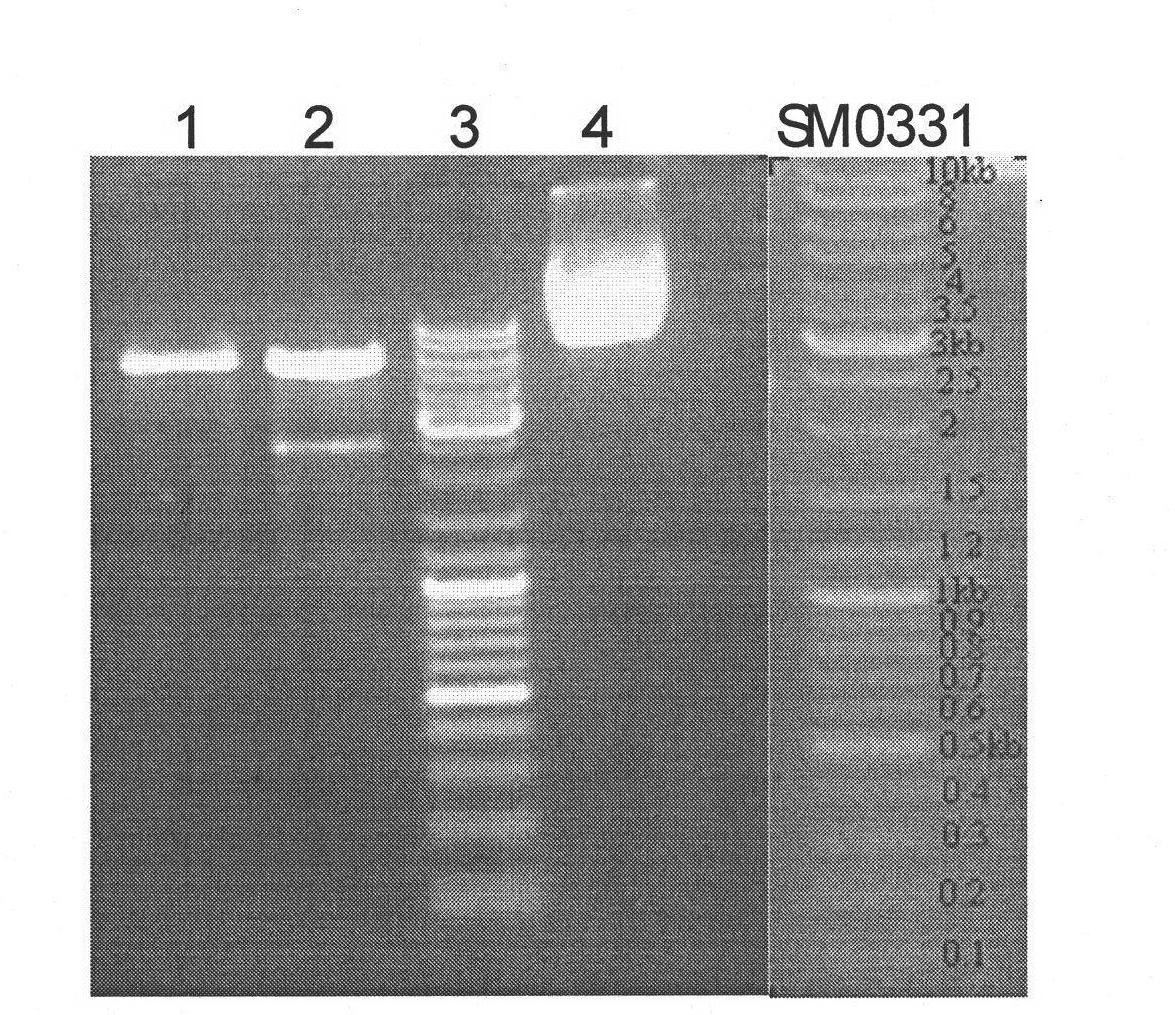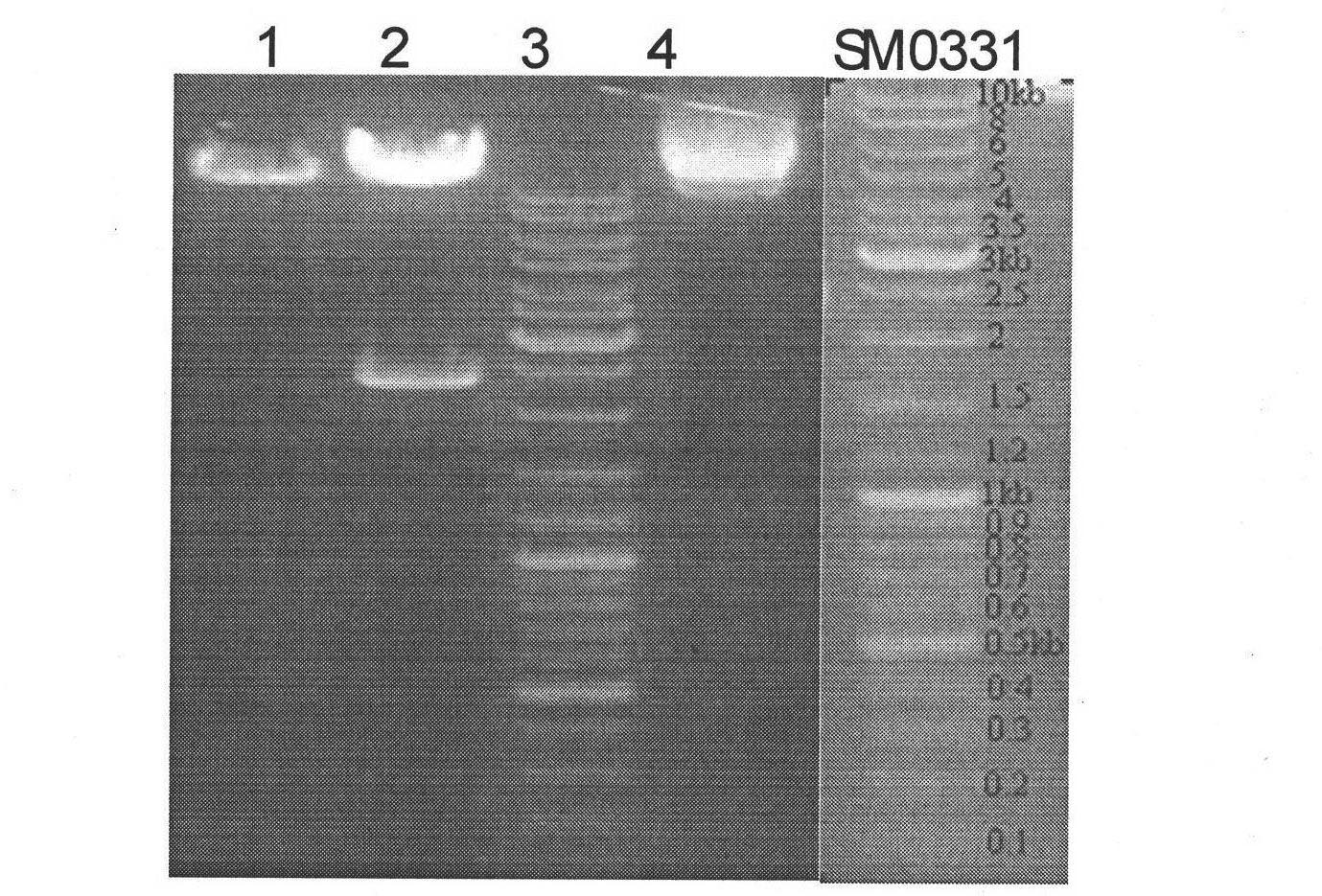Artificially synthesized Bt insect-resistant gene Cry1F-t and application thereof
A technology of cry1f-t and insect-resistant genes, which is applied in the fields of application, genetic engineering, plant genetic improvement, etc., can solve the problems of lack of insect-resistant varieties, ecological imbalance, environmental pollution, etc., to reduce usage, reduce environmental pollution, The effect of significant economic value
- Summary
- Abstract
- Description
- Claims
- Application Information
AI Technical Summary
Problems solved by technology
Method used
Image
Examples
Embodiment 1
[0024] Design and artificial synthesis of embodiment 1Cry1F-t gene
[0025] The Cry1F-t gene is based on the original nucleotide sequence of the Bt gene Cry1F, leaving a partially deleted N-terminal 1809bp base sequence SEQ ID No.5, and the amino acid composition of the retained sequence remains unchanged overall Under normal circumstances, the corresponding codons of the original Bt are replaced with the preferred codons of the plant genes, the AT-rich sequences and unclear intron sequences such as ATTTA and AATGAA in the Bt gene are eliminated, and the large reverse in the gene is eliminated. The repetitive sequence and the commonly used restriction endonuclease recognition site sequence are designed to design the coding sequence of the target synthetic Bt gene as shown in the sequence table SEQ ID No.1.
[0026] The newly modified Bt insect-resistant gene AdhI-Cry1F-t containing the enhancer AdhI (as shown in the sequence listing SEQ.ID NO: 4) was commissioned by Shanghai B...
Embodiment 2
[0046] Example 2 Expression of the newly modified Bt insect-resistant gene AdhI-Cry1F-t containing the enhancer AdhI in Escherichia coli cells and the toxicity detection of the expression product
[0047] In order to quickly detect the toxicity of the newly modified Bt insect-resistant protein Cry1F-t to corn borer, we constructed a prokaryotic expression vector of the AdhI-Cry1F-t gene and tested the toxicity of the insect-resistant protein Cry1F-t in vitro.
[0048] Plasmid pUCAdhI-Cry1F-t is provided by Shanghai Bioengineering Company and contains the Cry1F-t gene. According to the needs of constructing the prokaryotic expression vector of Cry1F-t gene, the NdeI endonuclease recognition site sequence CATATG was added to the 5' end of the primer sequence, and the HindIII endonuclease recognition site sequence AAGCTT was added to the 3' end. The primer sequences were designed as:
[0049] Upstream primer F1: 5-CATATGGGAAGGTGCAAGGATTGCTC-3
[0050] Downstream primer R1: 5-AA...
Embodiment 3
[0066] Embodiment 3 Plant transgenic vector construction and Agrobacterium transformation
[0067] Step 1: Digest the T vector plasmid pUCAdhI-Cry1F-t with XbaI and SacI, and recover the AdhI-Cry1F-t fragment with a gel extraction and purification kit.
[0068] Step 2: Digest the plant expression vector CPB with XbaI and SacI, and recover the digested CPB fragments with a gel extraction and purification kit.
[0069] The 3rd step: two fragments after the purification carry out ligation reaction, construct the plant expression vector pCAMBIA1300-AdhI-Cry1F-t-Bar, enzyme carries out enzyme digestion identification, shows that vector construction is correct (see image 3 ).
[0070] Agrobacterium-mediated genetic transformation (strain LBA4404) was used to transform corn callus and immature embryos, and the Cry1F-t gene maize genome was screened by the herbicide bialaphos to obtain transgenic plants. After screening, Carry out the transplanting of transgenic corn after regenerati...
PUM
 Login to View More
Login to View More Abstract
Description
Claims
Application Information
 Login to View More
Login to View More - R&D
- Intellectual Property
- Life Sciences
- Materials
- Tech Scout
- Unparalleled Data Quality
- Higher Quality Content
- 60% Fewer Hallucinations
Browse by: Latest US Patents, China's latest patents, Technical Efficacy Thesaurus, Application Domain, Technology Topic, Popular Technical Reports.
© 2025 PatSnap. All rights reserved.Legal|Privacy policy|Modern Slavery Act Transparency Statement|Sitemap|About US| Contact US: help@patsnap.com



